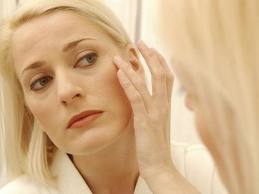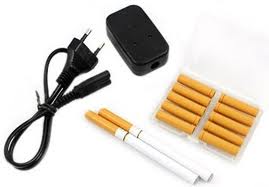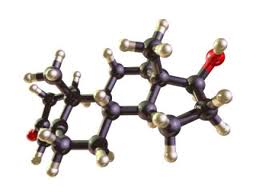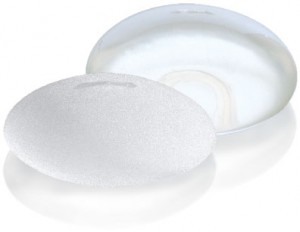 "In postmenopausal women the appearance of the skin may offer a glimpse of the skeletal well-being, a relationship not previously described," said Lubna Pal, MD, a reproductive endocrinologist at Yale School of Medicine, New Haven, Conn.
"In postmenopausal women the appearance of the skin may offer a glimpse of the skeletal well-being, a relationship not previously described," said Lubna Pal, MD, a reproductive endocrinologist at Yale School of Medicine, New Haven, Conn.
The study demonstrates only an association between bone density and skin wrinkling. However, Dr. Pal called these findings noteworthy."This information," Pal said, "may allow for the possibility of identifying postmenopausal women at fracture risk at a glance, without dependence on costly tests."
The study is an ancillary study to an ongoing multicenter trial called the Kronos Early Estrogen Prevention Study, or KEEPS, which is funded by the Aurora Foundation and the Kronos Longevity Research Institute in Phoenix. This ancillary study included 114 women in their late 40s and early 50s who had had their last menstrual period within the past three years and who were not taking hormone therapy. Women were excluded from participating if they had undergone any cosmetic skin procedures.
Women received a score for face and neck wrinkles based on the number of sites with wrinkles and on the depth of the wrinkles. The skin firmness or rigidity was measured at the forehead and the cheek with a device called a durometer. Study participants also underwent measurement of bone density by dual X-ray absorptiometry (DEXA) and by a portable heel ultrasound device.
The investigators found a significant inverse correlation between the wrinkle score and the bone density, meaning the higher the score (and the worse the wrinkles), the lower the bone density. This relationship was evident at all skeletal sites -- hip, lumbar spine and heel -- and was independent of age, body composition or other factors known to influence bone density, Pal said. Additionally, firmer skin of the face and forehead was associated with greater bone density.
Although the connection between bones and skin may seem unclear, Pal explained that they share common building blocks -- a group of proteins known as collagens. As we age, changes in collagen occur that may account for age related skin changes including worsening skin wrinkles and sagging skin, and also contribute to deterioration in bone quality and quantity.
Long-term studies are needed to substantiate a relationship between wrinkles and the risk of bone fracture, Pal said.
"Ultimately, we want to know if intensity of skin wrinkles can allow identification of women who are more likely to fracture a bone, especially the femoral neck or the hip, an often fatal injury in older people," she said. "If this is the case, then including the study of skin wrinkles to other clinical risk factors may allow identification of fracture risk in populations that do not have access to more costly technology." The results were presented at The Endocrine Society's 93rd Annual Meeting in Boston.

 New videos to help people make lifestyle changes and cope with the demands of diabetes were announced by the U.S. Department of Health and Human Services’ National Diabetes Education Program (NDEP). The series of three- to five-minute videos, which can be found
New videos to help people make lifestyle changes and cope with the demands of diabetes were announced by the U.S. Department of Health and Human Services’ National Diabetes Education Program (NDEP). The series of three- to five-minute videos, which can be found  Flaxseed provides no benefit in easing
Flaxseed provides no benefit in easing 
 Electronic cigarettes are devices designed to deliver nicotine or other substances to a user in the form of a vapor. Typically, they are made up of a rechargeable, battery-operated heating element, a replaceable cartridge that may contain nicotine or other chemicals, and an atomizer that, when heated, converts the contents of the cartridge into a vapor which can be inhaled. These products often are made to look like cigarettes, cigars, or pipes and are often marketed as a substitute for these items.
Electronic cigarettes are devices designed to deliver nicotine or other substances to a user in the form of a vapor. Typically, they are made up of a rechargeable, battery-operated heating element, a replaceable cartridge that may contain nicotine or other chemicals, and an atomizer that, when heated, converts the contents of the cartridge into a vapor which can be inhaled. These products often are made to look like cigarettes, cigars, or pipes and are often marketed as a substitute for these items.
 When the Food and Drug Administration allowed silicone gel-filled breast implants back on the market in November 2006, the agency required the manufacturers to conduct follow-up studies to learn more about the long-term performance and safety of the devices. on June 22, 2011, the FDA released a report that includes preliminary safety data from these studies, as well as other safety information from recent scientific publications and adverse events reported to FDA.
When the Food and Drug Administration allowed silicone gel-filled breast implants back on the market in November 2006, the agency required the manufacturers to conduct follow-up studies to learn more about the long-term performance and safety of the devices. on June 22, 2011, the FDA released a report that includes preliminary safety data from these studies, as well as other safety information from recent scientific publications and adverse events reported to FDA. Too often, teen pregnancy is thought of as an adolescent female's problem, but as they say, it takes two to tango. Of the approximately 10 million adolescent males aged 12 to 16 in 1996, a national study revealed that almost one in 10 became fathers before their 20th birthday(1). The
Too often, teen pregnancy is thought of as an adolescent female's problem, but as they say, it takes two to tango. Of the approximately 10 million adolescent males aged 12 to 16 in 1996, a national study revealed that almost one in 10 became fathers before their 20th birthday(1). The  The U.S. Food and Drug Administration today approved a new genetic test that will help health care professionals determine if women with breast cancer are HER2-positive and, therefore, candidates for Herceptin (trastuzumab), a commonly used breast cancer treatment.
The U.S. Food and Drug Administration today approved a new genetic test that will help health care professionals determine if women with breast cancer are HER2-positive and, therefore, candidates for Herceptin (trastuzumab), a commonly used breast cancer treatment. Eight substances were added to the
Eight substances were added to the